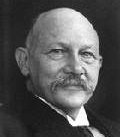

![]()
Superconductors, materials that have no resistance to the flow of electricity, are one of the last great frontiers of scientific discovery. Not only have the limits of superconductivity not yet been reached, but the theories that explain superconductor behavior seem to be constantly under review. In 1911 superconductivity was first observed in mercury by Dutch physicist Heike Kamerlingh Onnes of Leiden University (shown above). When he cooled it to the temperature of liquid helium, 4 degrees Kelvin (-452F, -269C), its resistance suddenly disappeared. The Kelvin scale represents an "absolute" scale of temperature. Thus, it was necessary for Onnes to come within 4 degrees of the coldest temperature that is theoretically attainable to witness the phenomenon of superconductivity. Later, in 1913, he won a Nobel Prize in physics for his research in this area.
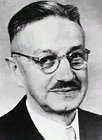
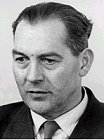
The next great milestone in understanding how matter behaves at extreme cold temperatures occurred in 1933. German researchers Walther Meissner and Robert Ochsenfeld (above) discovered that a superconducting material will repel a magnetic field (below graphic). A magnet moving by a conductor induces currents in the conductor. This is the principle on which the electric generator operates. But, in a superconductor the induced currents exactly mirror the field that would have otherwise penetrated the superconducting material - causing the magnet to be repulsed. This phenomenon is known as strong diamagnetism and is today often referred to as the "Meissner effect" (an eponym). The Meissner effect is so strong that a magnet can actually be levitated over a superconductive material.

In subsequent decades other superconducting
metals, alloys and compounds were discovered. In 1941 niobium-nitride was
found to superconduct at 16 K. In 1953 vanadium-silicon displayed superconductive
properties at 17.5 K. And, in 1962 scientists at Westinghouse developed
the first commercial superconducting wire, an alloy of niobium and titanium (NbTi).
High-energy, particle-accelerator electromagnets made of copper-clad niobium-titanium
were then developed in the 1960s at the Rutherford-Appleton Laboratory in the UK, and were first employed
in a superconducting accelerator at the Fermilab Tevatron in the US in 1987.
![]()
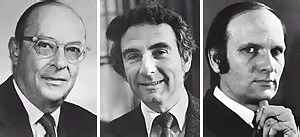
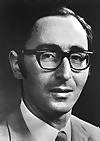

![]()
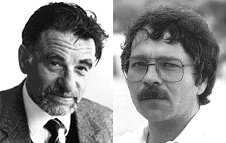
Müller and Bednorz' discovery triggered a flurry of activity in the field of superconductivity. Researchers around the world began "cooking" up ceramics of every imaginable combination in a quest for higher and higher Tc's. In January of 1987 a research team at the University of Alabama-Huntsville substituted yttrium for lanthanum in the Müller and Bednorz molecule and achieved an incredible 92 K Tc. For the first time a material (today referred to as YBCO) had been found that would superconduct at temperatures warmer than liquid Nitrogen - a commonly available coolant. Additional milestones have since been achieved using exotic - and often toxic - elements in the base perovskite ceramic. For more than 20 years the mercury copper-oxides held the record for highest transition temperature at 138 K. However, recently the thallium copper-oxides have moved into the lead. When incorporated into a 3212 structure, thallium, barium, tellurium, copper and oxygen will produce a Tc near 147K with a purity comparable to the mercuric cuprates.
![]()

The first company to capitalize on high-temperature superconductors was Illinois Superconductor (today known as ISCO International), formed in 1989. This amalgam of government, private-industry and academic interests introduced a depth sensor for medical equipment that was able to operate at liquid nitrogen temperatures (~ 77K).
![]()
In recent years, many discoveries regarding the novel nature of superconductivity have been made. In 1997 researchers found that at a temperature very near absolute zero an alloy of gold and indium was both a superconductor and a natural magnet. Conventional wisdom held that a material with such properties could not exist! Since then, over a half-dozen such compounds have been found. Recent years have also seen the discovery of the first high-temperature superconductor that does NOT contain any copper (2000), and the first all-metal perovskite superconductor (2001).
Also in 2001 a material that had been sitting on laboratory shelves for decades was found to be an extraordinary new superconductor. Japanese researchers measured the transition temperature of magnesium diboride at 39 Kelvin - far above the highest Tc of any of the elemental or binary alloy superconductors. While 39 K is still well below the Tc's of the "warm" ceramic superconductors, subsequent refinements in the way MgB2 is fabricated have paved the way for its use in industrial applications. Laboratory testing has found MgB2 will outperform NbTi and Nb3Sn wires in high magnetic field applications like MRI.
An unusual "family" of superconductors discovered recently are the "pnictides". These iron-based superconductors were first observed by a group of Japanese researchers in 2006. Like the high-Tc copper-oxides, the exact mechanism that facilitates superconductivity in them is a mystery. However, with Tc's over 50K, a great deal of excitement has resulted from their discovery.
The field of superconductor research has also been abuzz recently about "metal polyhydrides". Superconductivity near room-temperature has been observed in binary (two element) hydrides when they are put under pressure. And this appears to be phonon-mediated superconductivity, which would make them extraordinary Type 1 superconductors. (see News page.)
Though a theory to explain high-temperature superconductivity still eludes modern science, clues occasionally appear that contribute to our understanding of the exotic nature of this phenomenon. In 2005, for example, Superconductors.ORG discovered that increasing the weight ratios of alternating planes within the layered perovskites can often increase Tc significantly. Further increases in transition temperatures were then noticed when high dielectric constant alloys were used. This has led to the discovery of more than 140 new high-temperature superconductors, including a candidate for a new world record.
Researchers do agree on one thing: discovery in the field of superconductivity is as much serendipity as it is science. Stay tuned!
[For additional, more-obscure history, visit the "Atypical" and "Type 2"pages.]
[Last page rev: Dec. 2019]
![]()